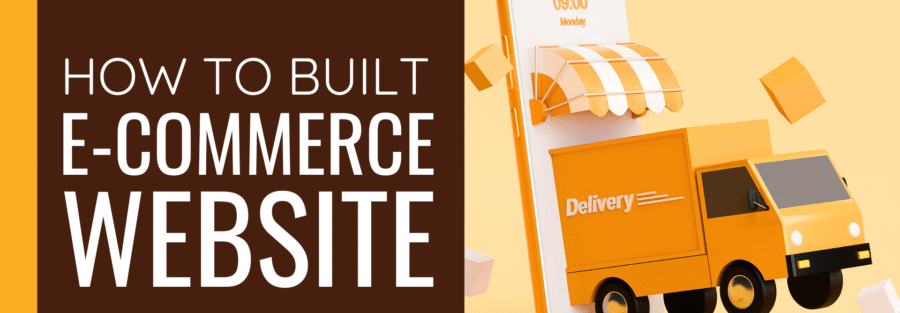How to Build an Ecommerce Website That Actually Sells in 2025
Let’s face it—anyone can build an ecommerce website today, but building one that actually sells? That’s a whole different game.
If you’re serious about turning clicks into customers and visitors into buyers, you need more than just a pretty design—you need strategy, structure, and smart tech.
In this blog, we’ll walk you through how to Build an Ecommerce Website That Actually Sells in 2025, ranks on Google, and gives your competitors a reason to worry.


First, What Is an Ecommerce Website?
An ecommerce website is a digital storefront where you sell products or services directly to customers online. Think Amazon, Flipkart, or even your local clothing brand’s online store.
Whether you’re selling physical products, digital goods, or services—your ecommerce website should work like your best salesperson, available 24/7.
Step 1: Choose the Right Ecommerce Platform
The foundation of your store matters. Choosing the wrong platform can hurt scalability and cost you in the long run.
Top Ecommerce Platforms in 2025:
- Shopify – Best for beginners and dropshipping
- WooCommerce – Perfect for WordPress users
- Magento – Powerful, but complex
- Wix Ecommerce – Drag-and-drop simplicity
- BigCommerce – Great for scalability
Step 2: Design for Conversions, Not Just Looks
Your design should do two things:
1. Build trust
2. Guide the visitor to buy
Here’s how:
- Use high-quality product images and videos
- Keep navigation simple and intuitive
- Add trust badges, secure checkout icons, and return policies
- Use clear, bold call-to-actions (CTAs) like “Buy Now” or “Add to Cart”
Step 3: Focus on SEO from Day One
If your store isn’t showing up on Google, it’s invisible. Implement ecommerce SEO from the beginning:
- Write unique product descriptions (no copy-paste from manufacturers!)
- Use keywords in product titles, URLs, and meta descriptions
- Add schema markup for rich snippets
- Optimize site speed and mobile experience
Step 4: Make It Mobile-First
Over 70% of online shopping happens on mobile. If your website doesn’t look amazing on a phone, you’re losing sales.
Make sure your ecommerce website is:
- Fast-loading
- Easy to scroll and tap
- Supports mobile payments like UPI, Google Pay, and Apple Pay.
Step 5: Offer a Smooth Checkout Process
Cart abandonment is real—and expensive. Fix it with:
- One-page checkout
- Guest checkout option
- Multiple payment gateways (Credit Card, UPI, PayPal)
- Progress indicators and auto-filled fields
Step 6: Add Upselling & Cross-Selling Features
Amazon does it. So should you.
- Show related products: “Customers also bought…”
- Offer bundles or discounts on combos
- Use exit-intent popups for last-minute deals.
Step 7: Build Trust With Reviews & Social Proof
Buyers trust buyers. Add:
- Verified product reviews
- User-generated photos
- Testimonials and case studies
- Social media integrations
Step 8: Drive Traffic With Smart Marketing
Once your ecommerce site is live, promote it using:
- Google Ads and Shopping campaigns
- Instagram and Facebook ads
- Influencer marketing and affiliate programs
- Email marketing with product highlights and cart reminders
Final Thoughts
Your ecommerce website isn’t just an online store—it’s your digital brand, marketing engine, and revenue channel all in one.
To build one that sells, you need more than just a developer. You need a partner who understands user experience, SEO, design psychology, and marketing.
Want help building an ecommerce website that actually sells?
SSF Designs builds powerful, mobile-optimized ecommerce stores tailored to your brand and audience.
DM +91-8700292865 for a FREE consultation today.




